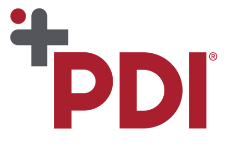Interventional Care


We notice that you are visiting us from . This site only services US-based visitors. Would you like to visit the site that is appropriate for your location?

Dovetailing on the previous Human Factors Engineering (HFE) blog, the Swiss cheese model in healthcare quality, published in The British Medical Journal in 20001, focuses on a systems approach to quality outcomes. While HFE works to optimize human performance within an operational system, what of the system itself and how can it be maximized for safety given the imperfect humans working within it?
The Swiss cheese model depicts the holes within the cheese as representing the imperfections in operations and potential hazards; the significance of multiple layers of cheese represents instituted safeguards to minimize those hazards1. To apply this in practice, consider the gaps within any facility’s cleaning and disinfection protocol as the holes within the cheese. Carling, et al., reported manual disinfection compliance to be as low as 49%2. Rutala, et al., discuss the layers (the multiple slices of cheese) needed within a cleaning and disinfection protocol to effectively address contaminated environmental surfaces and equipment/items3, and define this as a bundle per the Institute for Healthcare Improvement (IHI):
As quoted from an article by Reason, “We cannot change the human condition, but we can change the conditions under which humans work”1. Maintaining a high-reliability organization by using a systems approach to reduce error management (targeting the person, the team, the task, the workplace, and the entire institution)1 is imperative in healthcare. Utilizing surface disinfection technologies and layering with policy support, education and compliance monitoring are analogous to the Swiss cheese model. While we will talk a bit more about compliance monitoring and data sharing in a later post, let’s focus on an innovative technology, specifically UVC, that provides error management.
The Tru-D® device has been shown by multiple independent, third-party studies to reduce the incidence of microorganisms including SARS-Co-V-2, C. diff, VRE, and MRSA while minimally impacting room turnover time by as little as four minutes. The robot’s intuitive Sensor360® technology calculates the precise UVC dose needed for thorough room disinfection, reducing the risk of human error in the disinfection process. The result is a cleaner health care environment with a minimal impact on workflow and less risk of human error in the disinfection process.
Now, more than ever, considering a layered approach with surface and environmental disinfection is beneficial. Healthcare staff is stretched thin, burn-out is a very real concern and end-user compliance is problematic within environmental services and nursing teams. The layered approach to surface disinfection provides multiple interventions to reduce the risk of microorganism exposure within the healthcare environment.
References